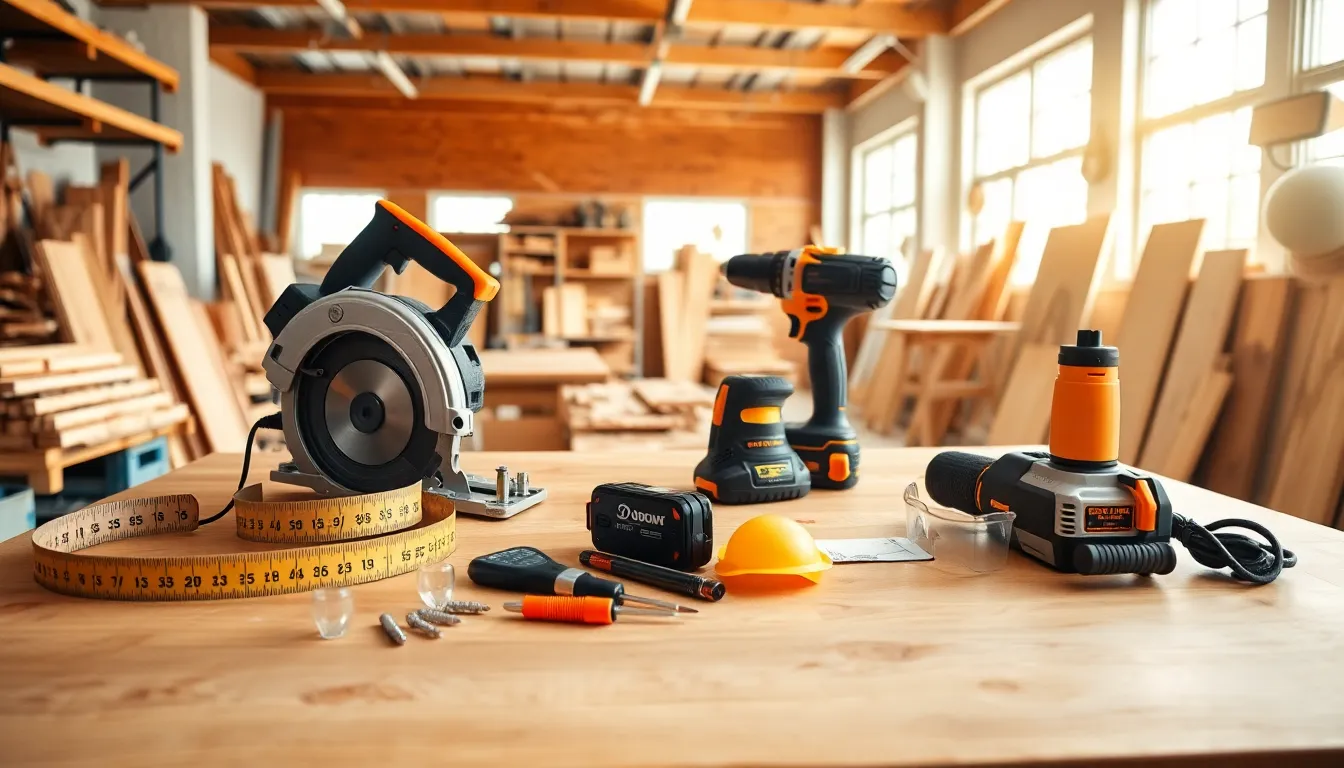Starting your journey into woodworking can feel a bit like stepping into a galaxy of sawdust and imagination. Sure, your first thought might be, ‘How on earth do I not end up with a finger in a vice grip?’ But fear not. With some essential tools, the right kind of wood, and a sprinkle of creativity, you’ll be crafting beautiful pieces for your home faster than you can say, ‘Where’s my hammer?’ Let’s jump into the world of DIY wood projects for beginners and unlock your inner carpenter, just maybe leave the power tools to the professionals until you’re ready.
Table of Contents
ToggleEssential Tools Every Beginner Needs

Every craftsman needs their toolbox, and woodworking is no different. Before plunging into mesmerizing projects, it’s essential to equip yourself with the right tools. Here’s a breakdown of must-haves:
- Measuring Tape: Think of it as your best friend. Measuring is at the heart of woodworking, whether you’re cutting or assembling, getting the dimensions right is crucial.
- Saw: A hand saw or a power saw can turn your wood pieces from raw materials into masterpieces. Beginners might find a circular or jigsaw most manageable.
- Drill: Perfect for making holes and driving screws, a good quality drill can save you from a lot of headaches. Cordless options offer more maneuverability.
- Screwdrivers: A simple set of Phillips and flat-head screwdrivers will complete your toolkit. They’re handy for making tight connects and adjustments.
- Clamps: These are often underrated but are vital for holding pieces together while glue sets or screws take their places.
- Sander: A smooth finish can elevate your project from okay to wow. A palm sander is user-friendly and great for beginners.
- Safety Gear: Last but not least, protect yourself with goggles and a dust mask. It’s better to be safe than sorry.
Choosing the Right Wood for Your Projects
Selecting your wood can be a perplexing part of the process. Not all wood is created equal, and it helps to know the basic types:
- Pine: Often the go-to for beginners, pine is affordable and easy to work with. It’s soft, which makes it easy to cut and shape.
- Plywood: This composite is made by stacking and gluing thin layers of wood. It’s strong and stable, making it excellent for projects that require a bit more durability.
- Poplar: A step up in terms of aesthetics, poplar has a finer grain and looks beautiful when stained or painted. It’s also easy to carve.
- Oak: For those looking to invest a little more, oak is incredibly durable. It’s great for furniture and boasts a stunning grain pattern, but keep in mind, it’s tougher to work with than softer woods.
When making your choice, consider the project type and your budget. The right wood can make or break your experience.
Five Simple DIY Wood Projects to Start With
Now that the tools and wood are laid out, let’s jump into some approachable projects that will spark your creativity:
Step-by-Step Guide: Building a Simple Bookshelf
This project is fantastic for beginners. You’ll need a few boards, screws, and your trusty drill. Start with measuring your desired height and width, then cut your boards accordingly. Assemble the pieces using clamps until the glue dries, and voilà, a custom bookshelf which makes you the envy of your friends.
Creating a Rustic Wood Bench
Imagine a cozy outdoor space with a rustic wood bench that you made yourself. For this, you’ll need several hardwood planks. Simply cut them to the desired length and screw them into sturdy legs. Sand down the edges for a smooth finish. Add a light wood stain and you’ll have the perfect spot for morning coffee.
Making Custom Picture Frames
Personalize your home with custom picture frames. This straightforward project requires minimal supplies. Cut the wood to the size of your picture, assemble the frame using screws, and paint or stain as you wish. Add a backing and a hook for hanging. Now, your favorite memories can be displayed beautifully.
Safety Tips for Beginner Woodworkers
Woodworking should be a fun and safe experience. Keep these essential safety tips in mind:
- Always wear goggles: Eye safety cannot be stressed enough. Flying sawdust isn’t just irritating: it can be dangerous.
- Keep your workspace clean: A tidy area reduces the risk of accidents and injuries. Trip hazards never help.
- Learn how to use tools properly: Each tool comes with its own set of safety precautions. A bit of research goes a long way.
- Don’t rush: Take your time and focus on your tasks. Woodworking is an art, it deserves patience and attention.
- Have a first-aid kit handy: Accidents can happen, even to the most cautious woodworkers. Be prepared.


